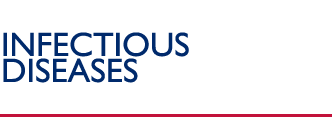Tuberculosis
|
 |
|
A suspected TB patient comes to a health clinic in Kampala, Uganda to give a sputum sample. Source: Gary Hampton/WHO/TBP
On January 22, Christy Hanson, TB Research Advisor at USAID, joined a panel discussion held by the Global Health Council, Aeras Global TB Vaccine Foundation, and the Foundation for Innovative New Diagnostics held with leaders in the effort to stop TB and in the work to develop new TB diagnostics for identifying this deadly disease more accurately and quickly. Read full remarks... |
|
|
Overview
World TB Day 2008 – March 24, 2008
The U.S. Agency for International Development (USAID), in close collaboration with global, regional, and developing country partners, is committed to addressing the global burden of tuberculosis (TB), which kills about 1.6 million people annually. Over the past six years the United States has helped provide effective treatment for 10 million people with TB in 78 countries. The U.S. Government, through USAID, is the leading bilateral donor in the world for TB and supports the expansion and strengthening of TB control in 37 countries. Between 2000 and 2006, USAID provided about $500 million to support TB programs worldwide.
USAID's goal is to make a significant contribution to global, regional, and national efforts to prevent and control tuberculosis and reduce morbidity and mortality associated with the disease. The Agency’s support strengthens the ability of countries most affected by TB to expand the use of proven and cost-effective interventions – such as the internationally recognized Directly-Observed Therapy, Short Course (DOTS) strategy – and achieve the World Health Organization (WHO) targets for TB case detection and cure rates. USAID is also addressing the emerging threat of multidrug-resistant (MDR) and extensively drug-resistant (XDR) TB by stepping up support to strengthen laboratories to improve case detection, infection control, surveillance, and training of health care providers in the diagnosis and treatment of MDR and XDR TB, all key components of the Global Response Plan.
|


